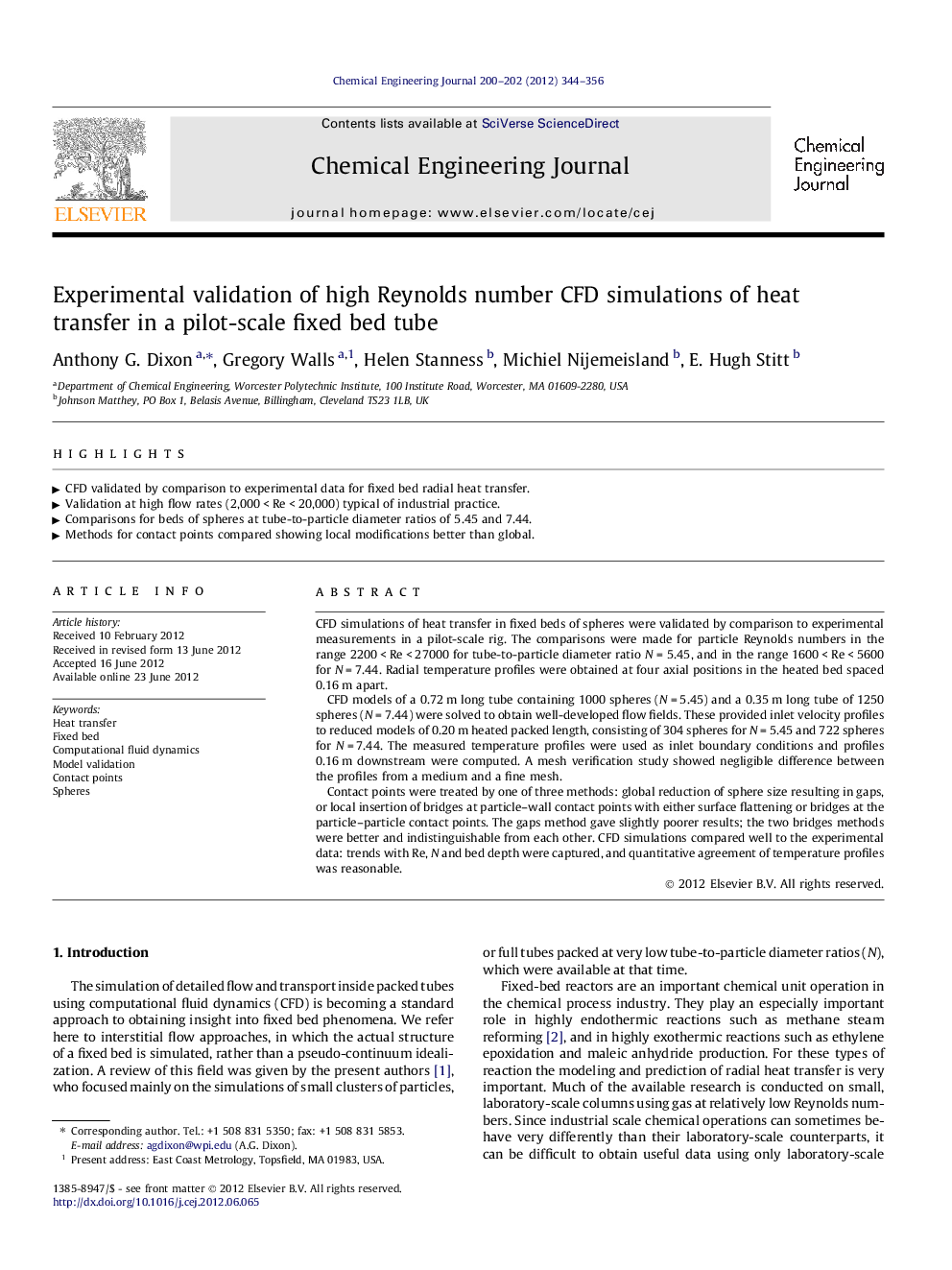| Article ID | Journal | Published Year | Pages | File Type |
|---|---|---|---|---|
| 149590 | Chemical Engineering Journal | 2012 | 13 Pages |
CFD simulations of heat transfer in fixed beds of spheres were validated by comparison to experimental measurements in a pilot-scale rig. The comparisons were made for particle Reynolds numbers in the range 2200 < Re < 27000 for tube-to-particle diameter ratio N = 5.45, and in the range 1600 < Re < 5600 for N = 7.44. Radial temperature profiles were obtained at four axial positions in the heated bed spaced 0.16 m apart.CFD models of a 0.72 m long tube containing 1000 spheres (N = 5.45) and a 0.35 m long tube of 1250 spheres (N = 7.44) were solved to obtain well-developed flow fields. These provided inlet velocity profiles to reduced models of 0.20 m heated packed length, consisting of 304 spheres for N = 5.45 and 722 spheres for N = 7.44. The measured temperature profiles were used as inlet boundary conditions and profiles 0.16 m downstream were computed. A mesh verification study showed negligible difference between the profiles from a medium and a fine mesh.Contact points were treated by one of three methods: global reduction of sphere size resulting in gaps, or local insertion of bridges at particle–wall contact points with either surface flattening or bridges at the particle–particle contact points. The gaps method gave slightly poorer results; the two bridges methods were better and indistinguishable from each other. CFD simulations compared well to the experimental data: trends with Re, N and bed depth were captured, and quantitative agreement of temperature profiles was reasonable.
► CFD validated by comparison to experimental data for fixed bed radial heat transfer. ► Validation at high flow rates (2,000 < Re < 20,000) typical of industrial practice. ► Comparisons for beds of spheres at tube-to-particle diameter ratios of 5.45 and 7.44. ► Methods for contact points compared showing local modifications better than global.
